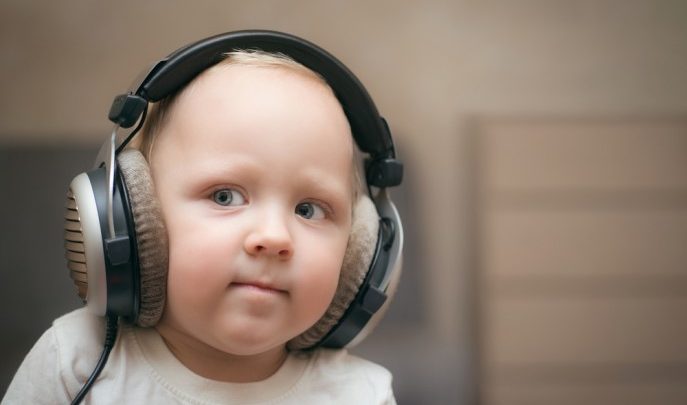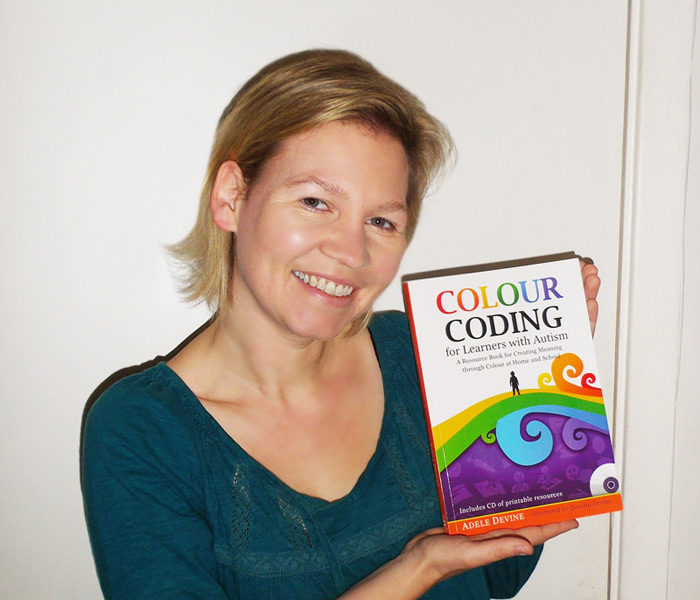Want to develop communication and confidence in children with SEN? Sing

It is important not to rely on recordings, but to build up the confidence and sing yourself.

- by Adele Devine

Music triggers memories. Think of a song that makes you happy – maybe there’s one which always gets you dancing? Music can also be soothing, comforting, uplifting and build a child’s confidence. Even in the womb babies respond to sounds; they tune into their mother’s heartbeat, and after birth parents will learn to soothe them with lullabies and repetitive rhythms.
During our home visits we gain information from parents about what their child likes and dislikes, and make a point of finding out if there are songs they will respond to. This often proves useful. When one of the children in our class was tearful on his first day I was able to comfort him by singing ‘Twinkle, Twinkle, Little Star’. The familiar song made him feel safe, reduced his anxiety and stopped him crying. Knowing his song also helped to build trust.
For children starting school, things can be overwhelming, particularly if they have sensory issues related to sounds or smells or lighting. Maybe the language you use is unfamiliar to the child; maybe with everything new they are experiencing, words are impossible to separate and process. Music has the power to break through these barriers.
Set songs
The potential of music extends far beyond the first few weeks, too. For example, having set songs before regular activities provides the child who does not process language or recognise visual queues with another opportunity to gain information about what’s happening. Try having set songs for ‘hello’, ‘circle time’, ‘tidy time’, ‘snack time’, ‘lunch time’, ‘brushing teeth’, ‘going to the toilet’ and ‘goodbye’. The music can help the child know what’s coming next, learn expectations, and work out patterns and routines, which may reduce anxiety and help them feel safe.
It is important not to rely on recordings, but to build up the confidence and sing. Only then can we provide opportunities for musical conversations and adapt our pace to suit the individual child. Songs like ‘Twinkle, Twinkle, Little Star’, ‘Row, Row, Row Your Boat’, ‘Five Little Ducks’, ‘Five Little Speckled Frogs’ and ‘If You’re Happy and You Know It’ are great options to get you started.
Final thoughts
When we investigate, tune into and respond to a child’s special songs, we not only open the door to communication but build their trust as well. When we add music to our own routines, we provide little landmarks, highlighting our routines and making them more familiar, which may help the child feel safe.
Friedrich Nietzsche is said to have once observed, “And those who were seen dancing were thought to be insane by those who could not hear the music.” When a child trusts us and feels safe with us they may just reach out and teach us how they learn.
CASE STUDY: ‘Settling Sylvie’
Water music Hydrotherapy sessions are great for all children, but particularly important for those with physical disabilities. The warm water relaxes the muscles and (with the guidance of our physiotherapists) enables us to work with the children based on individual needs. We can set the lighting and music to further enhance the sensory environment. These sessions also offer a great opportunity for building communication through Intensive Interaction.
Building relationships It was Sylvie’s first day and we were in the hydro pool. Her mother was on the side of the pool. Sylvie had complex medical needs and no speech, but could clearly express emotions through facial expressions. I was holding her in the pool and singing ‘Row, Row, Row Your Boat’. I could see it was a familiar song as she was reacting with smiles.
Then we got to the second verse of the song, “…if you see a crocodile, don’t forget to scream!” and Sylvie smiled and made a sound for the scream. I instantly commented on how clever she was, and Mum said it was a song she sang a lot at home.
Sylvie beamed because she had been able to show how clever she was, and Mum felt safe in the knowledge that we were going to ‘get’ her special little girl.
That song taught me a lot about Sylvie and how to work with her, but it also helped cement the foundations of a trusting relationship with Sylvie and her Mum.
CASE STUDY: ‘Sing a song of toast’
Finding her voice Talia would sing along to favourite songs in a quiet, tuneful way. Her little face would light up when we found her music, but these were the only times we would hear her voice. Talia was able to use symbols to make requests using her PECS book. She would ask for ‘biscuit’ or ‘blanket’ or ‘book’, but would wait for us to speak. When using PECS, staff model the words so that the pre-verbal child hears them again and again, and associates the word with the request. The hope is that the child will eventually gain confidence to say the words.
Singing sentences Talia would arrive at school hungry and was keen to join breakfast club. Her PECs sentences became increasingly clever. She went from requesting ‘toast’ with a single symbol to making the sentence “I want jam on toast.”
During these sessions I instinctively started to sing the PECS sentence when modelling speech for Talia. I’d sing, “I want jam on toast” in a rhythm and tone similar to those we used when we sang together. When using PECS there is always a pause, giving the child the chance to fill the gap with their own speech.
Gradually, over time, something magical happened. Talia started to request toast by singing her sentences. And this wasn’t all. Once Talia learnt to do this in our breakfast club sessions she transferred the skill. Singing was the hidden key to Talia learning to speak!
GO FOR A SONG
Eight tips for bringing music into your setting • Find out favourite songs from the home visit and note them to pass on to other staff. • Communicate regularly with parents to keep up to date with children’s musical preferences. • Give all children the chance to choose songs using Makaton signs, pictures, symbols or switches. • Use Makaton signs for songs. Learn with ‘Singing Hands’ (available on YouTube). • Use parachutes, puppets and sensory props to increase attention and build associations. • Provide a table with instruments – shakers, drums, bells, keyboards, harmonicas, xylophones, etc. • Provide a visual volume control and ear defenders for sound-sensitive children. • Allow children to improvise and communicate through using instruments. Remember to pause and wait for responses!
Adele Devine is a teacher at Portesbery School and director of SEN Assist.











